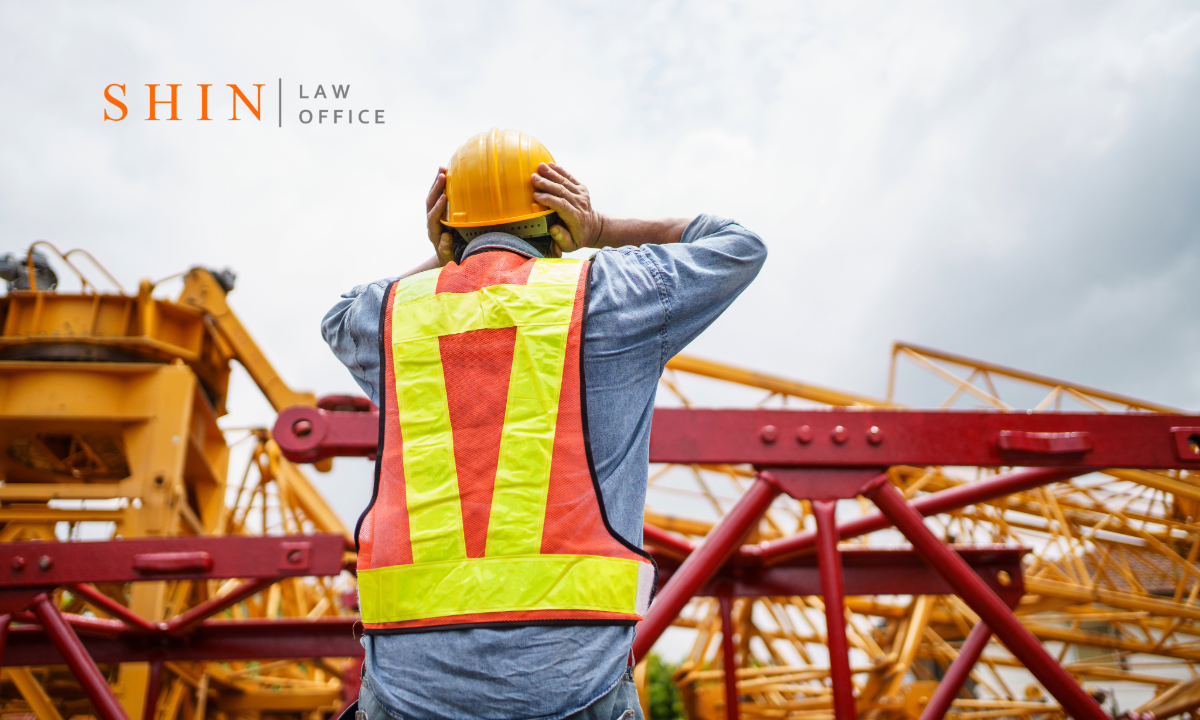By Anthony I. Shin, Esq. | Personal Injury Attorney | Shin Law Office
Bristow Construction Site Premises Liability Lawyer
Construction zones in Bristow are busy, constantly changing environments filled with heavy machinery, unstable surfaces, and active trade crews.
These sites are supposed to operate under strict safety rules.
When a property owner or contractor fails to control hazards, serious injuries follow.
Visitors, delivery drivers, inspectors, and even subcontractors can be harmed when unsafe conditions are ignored or dismissed as part of the job.
In Virginia, construction site injuries fall under a specific group of premises liability and negligence rules.
These rules determine who is responsible when open and apparent hazards, contractor negligence, or safety violations create dangerous conditions that result in harm.
Virginia Premises Liability Duties on Construction Sites
Under Virginia law, the owner or controller of the property owes a legal duty to make the premises reasonably safe for people expected to be there.
This can include workers from other companies, material suppliers, delivery drivers, and visitors.
Virginia courts have long recognized that owners must warn lawful visitors about hidden dangers.
This principle comes from cases such as Fobbs v. Webb Building Limited Partnership, 232 Va. 227.
If the site owner or controlling contractor knew or should have known about a hazard and failed to correct it or warn others, they can be held liable.
The Challenge of Open and Obvious Hazards
Construction sites contain many things that seem obviously dangerous.
Open trenches, loose debris, exposed wiring, or unprotected edges can appear to be risks that anyone should avoid.
Defendants often rely on the open-and-obvious doctrine.
In Virginia, if a hazard is open and obvious to a reasonable person, the injured party may face an argument that they should have noticed and avoided it.
However, this defense is not absolute.
Virginia courts have repeatedly recognized that a hazard can be open and obvious yet still unreasonably dangerous when the visitor must encounter it to do their job. For example:
• If a delivery driver must walk through a debris-filled path because no safe route exists
• If an inspector must enter an unlit or unstable area because the job demands it
• If a subcontractor is directed into a known hazard zone by the general contractor
In these cases, the open-and-obvious defense does not excuse negligence.
This is supported by Wagoner v. Newport News Shipbuilding and Dry Dock Company, 238 Va. 143, where the court clarified that an employee or visitor may still recover if they were required to face the hazard during their assigned duties.
Contractor Negligence and Job Site Control
One of the most complex issues in Virginia construction injury cases involves determining who actually had control of the work area.
Under Virginia Code section 8.01 39 and long standing case law, liability often depends on who possessed the right to control and supervise the site.
Examples of contractor negligence include:
• Failing to secure scaffolding
• Leaving power tools or cords in walkways
• Allowing materials to fall from elevated platforms
• Poor lighting in high traffic areas
• Lack of required safety barriers around trenches or pits
• Failure to maintain clear access paths for suppliers or visitors
General contractors also have a duty to ensure that subcontractors follow safe practices.
If they fail to monitor or coordinate work safely, they can be held responsible.
OSHA Standards Strengthen Negligence Claims
While OSHA regulations do not create a private right of action in Virginia, they are highly relevant in negligence cases.
OSHA rules help show what a reasonably safe construction site should look like.
When a party violates OSHA requirements, Virginia courts often view that violation as powerful evidence of negligence.
For example, OSHA requires:
• Fall protection for edges above six feet
• Guardrails around elevated platforms
• Safe housekeeping that prevents tripping hazards
• Secured materials stored properly
• Adequate lighting
• Controlled public access to active work zones
When these rules are ignored, it becomes harder for the negligent party to argue that they acted reasonably.
Common Injuries on Bristow Construction Sites
Visitors and workers commonly suffer:
• Falls from unprotected edges or shifting ground
• Slip and fall injuries on debris or wet surfaces
• Being struck by falling tools or materials
• Electrical shocks from exposed wiring
• Vehicle and heavy equipment collisions
• Injuries due to collapsed trenches or unstable soil
These injuries often result in fractures, head trauma, spinal injuries, or long-term disability.
How a Lawyer Helps After a Construction Site Injury
An attorney can investigate who controlled the site, collect safety records, examine OSHA violations, interview witnesses, and uncover communication between contractors and property owners.
Construction cases in Virginia require a detailed understanding of site control, layered contractor relationships, and state premises liability principles.
If you were injured on a Bristow construction site because of unsafe conditions, you do not have to navigate these complex laws alone.
A careful investigation can reveal responsibility and help you recover the compensation the law provides.
— Anthony I. Shin, Esq.
Principal Attorney | Shin Law Office
Call 571-445-6565 or book a consultation online today.




